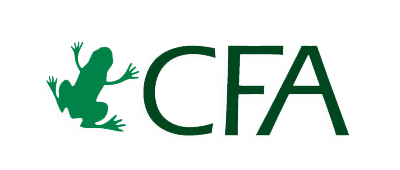Welcome to the Conservation Finance Guide. The overall goal is to provide practical tools to support the rapid expansion of sustainable finance mechanisms that generate long-term funding for biodiversity conservation.

Welcome to the Conservation Finance Guide. The overall goal is to provide practical tools to support the rapid expansion of sustainable finance mechanisms that generate long-term funding for biodiversity conservation.

From the perspective of protected area managers (an important subset of the larger community of biodiversity conservationists as discussed above), we can roughly divide fiscal instruments into two categories: (a) revenue-generating instruments, and (b) behavior-changing instruments. For the most protected area managers, revenue-generation is of greater immediate interest.
Revenue-generating instruments can be designed at various levels of the political system. Instruments can be designed for the protected area system or even for a specific protected area. They can be designed at local and provincial/state levels of government. They can also be designed at the national/federal level of government.
Depending on the fiscal policies and practices of the government, managers of protected area systems or specific protected areas may have some autonomy to design specific fiscal instruments for the protected area. Entrance fees to parks provide one obvious example. User fees for the sustainable use of biological resources – such as backpacking, fishing or hunting fees – are also common. Licensing fees for tourist operations and filming rights are also possible. Such fiscal instruments are based on the benefit principle and generate earmarked revenues for the protected area authorities.
Protected area managers may also be able to benefit from the design of fiscal instruments at the local or provincial/state level. For example, a portion of a local or provincial sales tax – generated in part from the spending of park visitors in the local economy – may be earmarked to the protected area. Landowners who benefit from being adjacent to or near a protected area may pay a portion of their property tax to the protected area. Innovative fiscal instruments, such as a state lottery, may earmark earnings to a protected area.
At the national/federal level, fiscal instruments which earmark revenue may also be possible, though these are likely to be for systems of protected areas rather than specific parks. Examples include setting aside a portion of a national sales tax or revenues from a national lottery. One innovative instrument is to earmark a portion of revenues earned from an entry visa into the country or an airport departure tax.
Tax incentives can also be designed to encourage workers and businesses to contribute part of their income to a protected area. Income tax deductions for biodiversity-related contributions can be included in the tax code.
Protected area managers may also be interested in using fiscal instruments to change the behavior of economic actors with respect to maintaining the protected area and conserving biodiversity. A tax incentive for voluntary contributions, as just discussed, is one option.
Of particular interest to many protected areas is the impact of economic activities in the buffer areas of a park on the integrity of the park and the conservation of biodiversity within the greater bio-region. Local, provincial and/or national fiscal instruments can be designed to encourage biodiversity-benefiting economic activities – such as organic farming and ecotourism – around protected areas. Tax breaks – on income taxes, property taxes, employment taxes, etc. – can be given to such biodiversity businesses.
Tourism companies who bring visitors to the park and maintain biodiversity-benefiting standards in the operations could also be given tax breaks. The same holds for other economic activities – such as farming, fishing, hunting, sustainable wild harvesting, and research – which take place within a protected area.
In addition to influencing economic activities in and around protected areas, fiscal activities can also be used to influence household behavior. For example, if there are sizable settlements within the bio-region in which the park is located, tax incentives may be used to encourage biodiversity-friendly practices in local homes and gardens, including removal of exotic species and the establishment of wildlife corridors within the settlements.
Overview
1. Understanding Fiscal Instruments for Conservation
1.1 Overview
1.2 Key Actors and Motivations
1.3 Types of Fiscal Instruments
1.5 Success Factors
2. A Selection of Case Studies
2.1 Instruments for Raising Revenue
2.2 Instruments for Changing Behavior
3. Resources
3.1 Websites
3.2 Suggested Reading